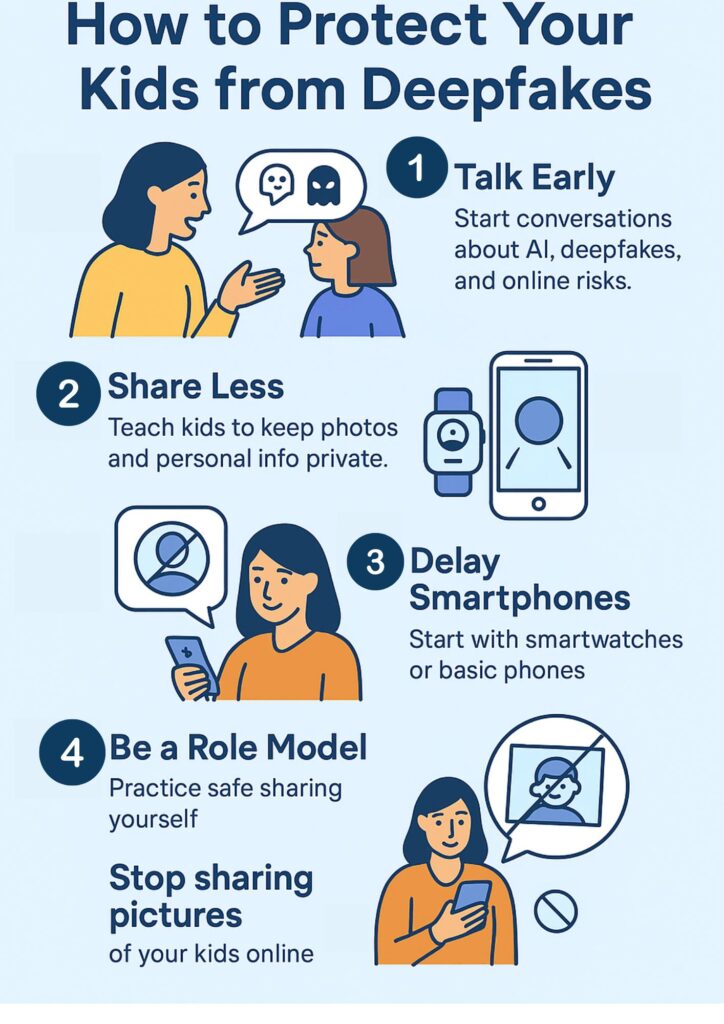
AI algorithms analyze thousands of images of a person’s face from different angles, then map these onto existing video footage.
Early deepfakes were easy to spot, but modern versions can be nearly indistinguishable from real footage.
What once required technical expertise now only needs basic apps and tools available to anyone.

Have open, ongoing conversations with your child about the internet—not just the fun parts, but the risks too. Talk about what deepfakes are and how images and videos can be manipulated without consent. Keep it simple: "Sometimes people can use technology to fake pictures or videos. It's important to come to me if you ever see something weird or upsetting."
Teach your child to think before they post. Public selfies, dance videos, or innocent clips can be downloaded and used for the wrong reasons. Encourage private profiles and being selective about who they connect with online.

The younger the child, the less they need full internet access. Consider delaying smartphones and opting for smartwatches or basic phones that only allow calling and texting.

Parental controls can block risky apps and set screen time limits, but they aren't foolproof. What's stronger is teaching your child why certain things are dangerous, so they can make better decisions themselves.

Make it normal to review your child's apps, privacy settings, and followers. You don't have to snoop—just frame it as a teamwork activity. "Let's do a quick phone check to make sure everything's safe and working right."
Show examples of obvious deepfakes or AI-generated content so your child learns to question what they see online. Critical thinking is one of their best tools in the digital world.

Kids follow your lead. If you're sharing everything online or reacting emotionally to fake content, they'll do the same. Show them what cautious, thoughtful digital behavior looks like.
It may seem harmless, but every photo you post adds to your child’s digital footprint. AI tools can scrape public images and use them in deepfakes or scams. If you must share, keep accounts private and limit who sees it.
This final tip might be the most important in the age of AI and deepfakes. While sharing photos of our children feels natural, it creates a permanent digital record that can be misused. Consider alternatives like private photo-sharing apps or physical photo albums to protect your child’s digital identity while still preserving precious memories.
Latest from our blogs

Get latest online safety advice
© 2025 Learning KidsnClicks All rights Reserved.